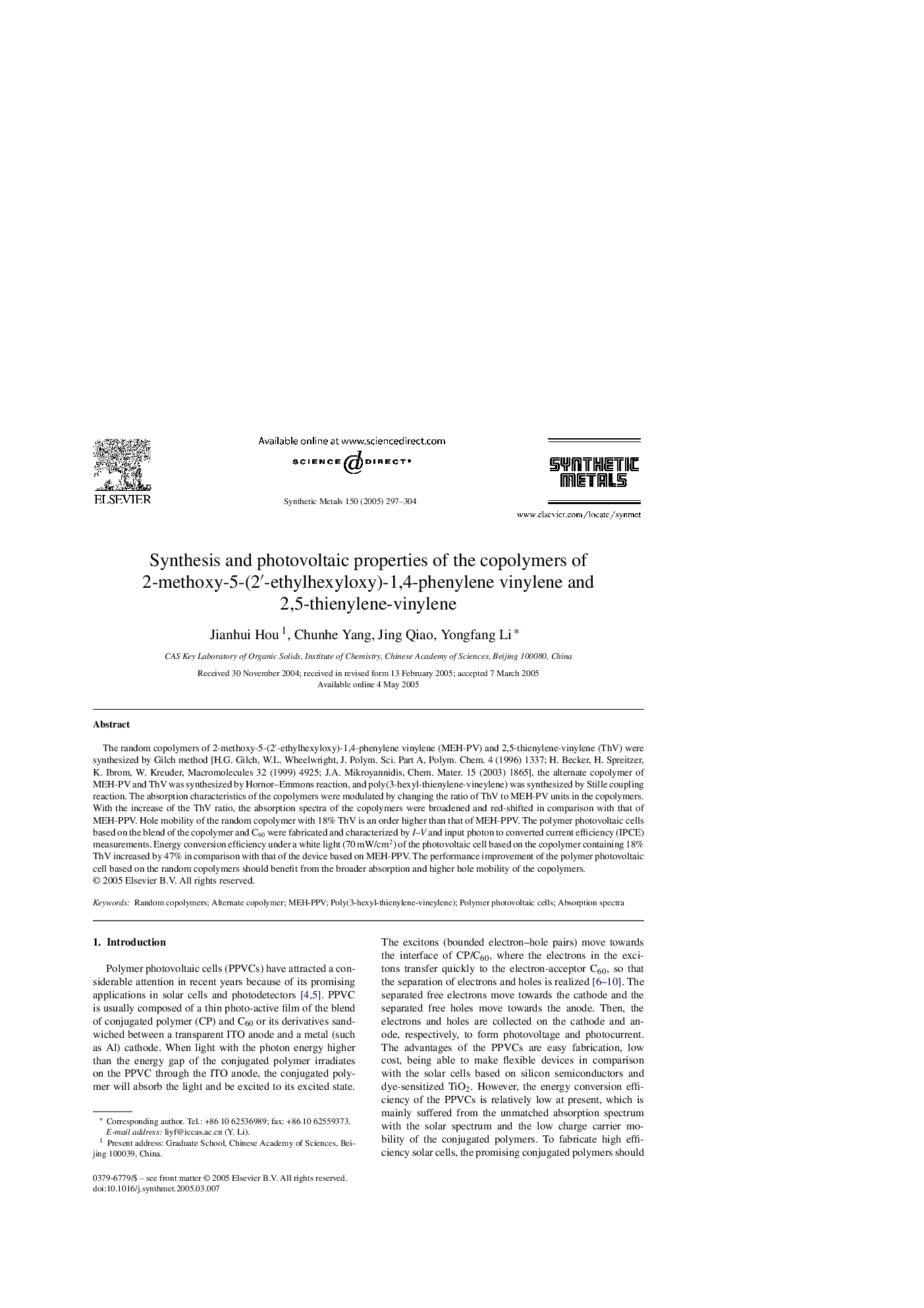| Article ID | Journal | Published Year | Pages | File Type |
|---|---|---|---|---|
| 9776498 | Synthetic Metals | 2005 | 8 Pages |
Abstract
The random copolymers of 2-methoxy-5-(2â²-ethylhexyloxy)-1,4-phenylene vinylene (MEH-PV) and 2,5-thienylene-vinylene (ThV) were synthesized by Gilch method [H.G. Gilch, W.L. Wheelwright, J. Polym. Sci. Part A, Polym. Chem. 4 (1996) 1337; H. Becker, H. Spreitzer, K. Ibrom, W. Kreuder, Macromolecules 32 (1999) 4925; J.A. Mikroyannidis, Chem. Mater. 15 (2003) 1865], the alternate copolymer of MEH-PV and ThV was synthesized by Hornor-Emmons reaction, and poly(3-hexyl-thienylene-vineylene) was synthesized by Stille coupling reaction. The absorption characteristics of the copolymers were modulated by changing the ratio of ThV to MEH-PV units in the copolymers. With the increase of the ThV ratio, the absorption spectra of the copolymers were broadened and red-shifted in comparison with that of MEH-PPV. Hole mobility of the random copolymer with 18% ThV is an order higher than that of MEH-PPV. The polymer photovoltaic cells based on the blend of the copolymer and C60 were fabricated and characterized by I-V and input photon to converted current efficiency (IPCE) measurements. Energy conversion efficiency under a white light (70Â mW/cm2) of the photovoltaic cell based on the copolymer containing 18% ThV increased by 47% in comparison with that of the device based on MEH-PPV. The performance improvement of the polymer photovoltaic cell based on the random copolymers should benefit from the broader absorption and higher hole mobility of the copolymers.
Related Topics
Physical Sciences and Engineering
Materials Science
Biomaterials
Authors
Jianhui Hou, Chunhe Yang, Jing Qiao, Yongfang Li,
